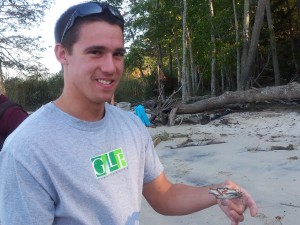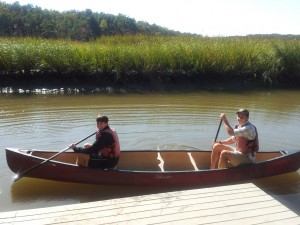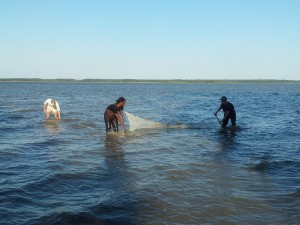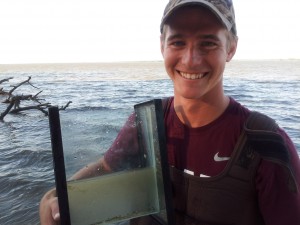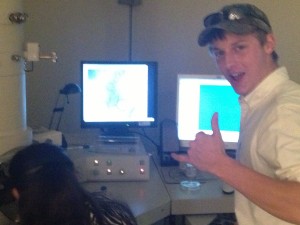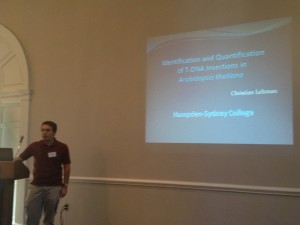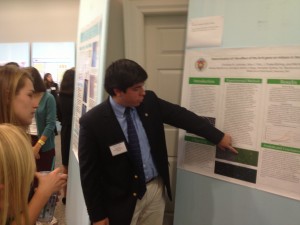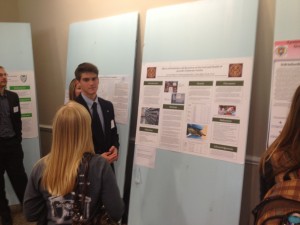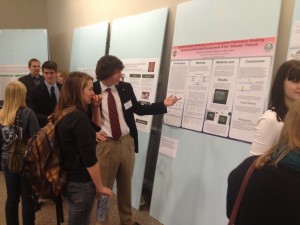Dr. Rachel Goodman and several students in her Ecology class (BIOL 203) spent an afternoon at York River State Park in the fall of 2012. We took a guided canoe tour of Taskinas Creek and learned about tidal wetlands and the important roles they play in dampening storm surges and serving as nurseries for many species in the Chesapeake Bay. We spotted some of the unique animals that inhabit this community, including a few species of crabs (Daniel Adams holding one below) and several bird species. We also took out seines and dip nets to catch a few fish (Hakeem Mohammed and Jason Haas seining below).
